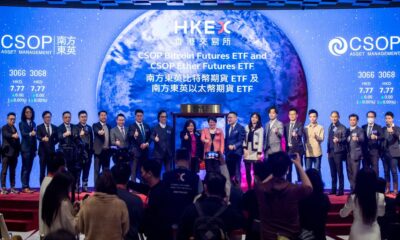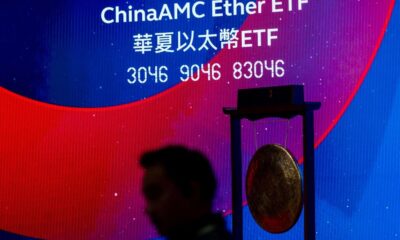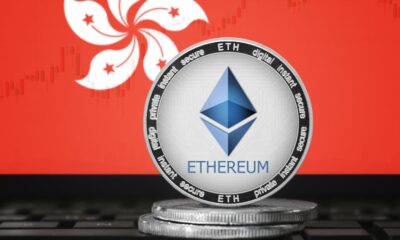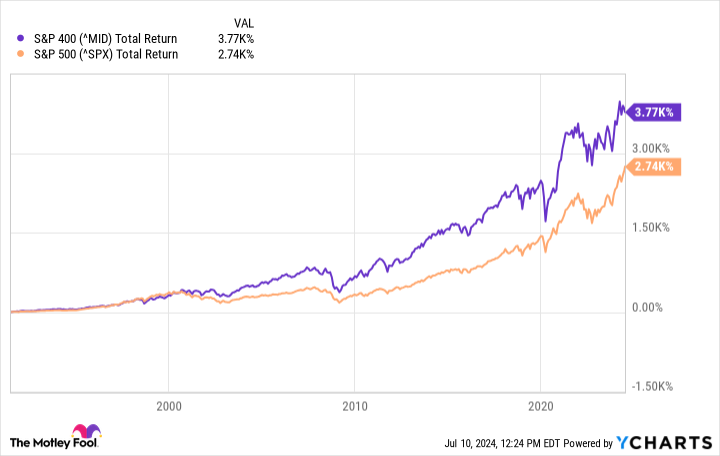ETFs
Alors que les ETF gagnent en popularité, les particuliers prennent les choses en main tandis que les émetteurs se précipitent pour répondre à la demande
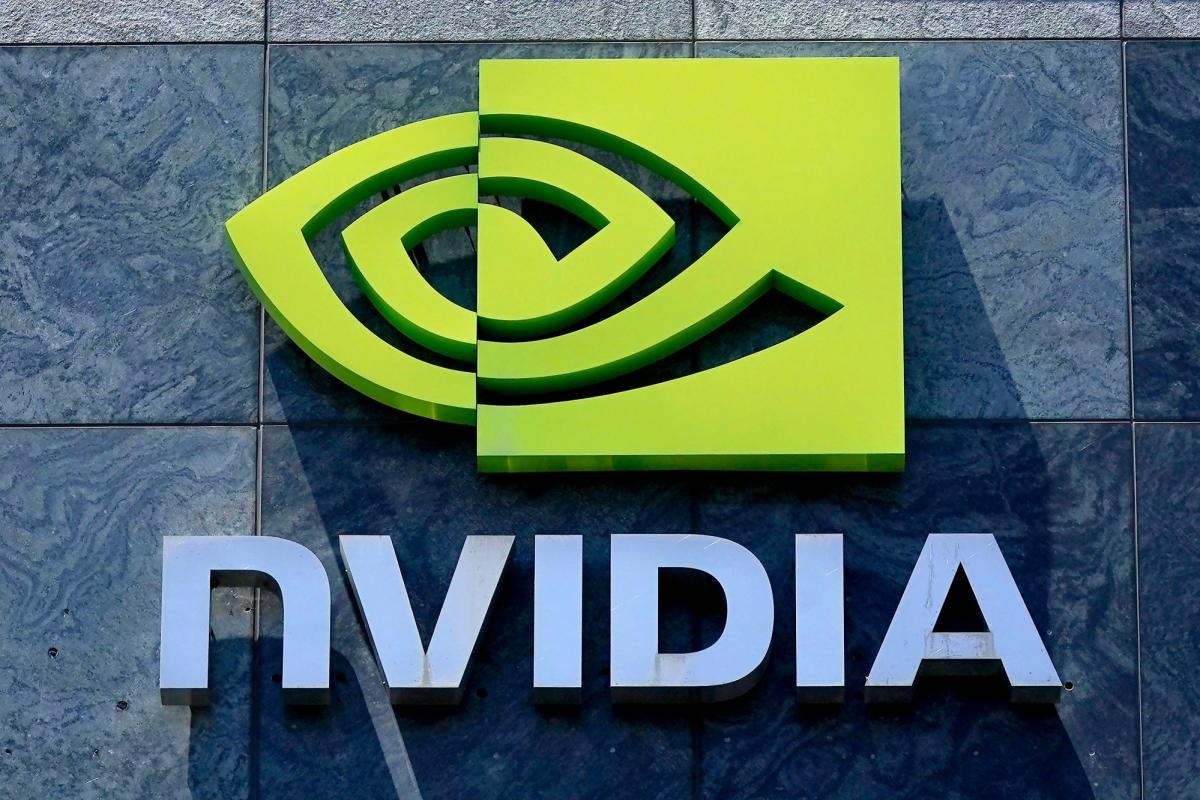
Captivé par le rallye spectaculaire de les marchés mondiaux Cette année, Fredric Luk s’est lancé dans son parcours d’investissement avec de grands espoirs, en sélectionnant soigneusement quelques actions prometteuses.
Mais après avoir été échaudé par quelques paris malheureux, il a rapidement vendu la totalité de ses participations dans des entreprises technologiques américaines et a canalisé ses investissements dans une poignée de fonds négociés en bourse (ETF).
« L’achat d’actions individuelles comporte de nombreux risques, surtout lorsque vous ne connaissez pas exactement le marché, sans compter le décalage horaire. [in the trading hours of different markets]”, a déclaré Luk, 25 ans, consultant professionnel à Hong Kong. “Il est plus logique pour moi d’obtenir une large exposition au marché.”
Vous avez des questions sur les sujets et les tendances les plus importants du monde entier ? Obtenez les réponses avec Connaissances SCMPnotre nouvelle plateforme de contenu organisé avec des explications, des FAQ, des analyses et des infographies proposées par notre équipe primée.
Luk fait partie d’une communauté croissante d’investisseurs en Asie qui s’intéressent aux ETF. Ces instruments peu coûteux, diversifiés et transparents deviennent de plus en plus le choix de prédilection des investisseurs particuliers et institutionnels, la région connaissant la croissance la plus rapide au monde.
Selon ETFGI, un cabinet de recherche et de conseil indépendant, les actifs totaux des ETF en Asie-Pacifique, hors Japon, ont augmenté de près de 15 % pour atteindre un record de 890 milliards de dollars au cours des cinq premiers mois de l’année, en plus de la croissance de 36 % en 2023. Les entrées nettes de 118 milliards de dollars au cours de cette période sont les plus élevées jamais enregistrées dans la région, marquant 35 mois consécutifs d’entrées sans précédent.
Selon un récent rapport de PwC, le marché asiatique des ETF dépasse désormais 1 300 milliards de dollars, en incluant le Japon. Il est en passe de doubler de taille pour atteindre au moins 2 500 milliards de dollars d’ici 2028. Cela signifie que ce marché pourrait devenir le deuxième plus grand marché d’ETF au monde après les États-Unis, et la plus forte demande devrait provenir des investisseurs particuliers, ajoute le rapport.
« Dans un marché où les investisseurs sont jeunes, sophistiqués et réfléchissent davantage à ce qu’ils achètent, les ETF sont devenus populaires », a déclaré Eugenie Shen, directrice générale et responsable de la gestion d’actifs à l’Asia Securities Industry and Financial Markets Association (Association des sociétés d’ingénierie et de fabrication de matériels électroniques (ASIFMA)).
Lancés pour la première fois aux États-Unis en 1993, les ETF regroupent un panier de titres différents qui suivent généralement un indice ou un indice de référence et visent à générer des rendements correspondant à ceux du marché sous-jacent global. Comme pour d’autres titres, les investisseurs peuvent acheter ou vendre des ETF par l’intermédiaire de leurs courtiers à tout moment pendant les heures de négociation d’un marché.
L’histoire continue
Cela confère au produit plusieurs avantages. Par rapport aux actions ou aux obligations individuelles, un ETF offre aux investisseurs une exposition plus large au marché par le biais d’un seul véhicule. Et contrairement fonds communs de placementqui nécessitent généralement des intermédiaires tels que les banques pour y accéder, il élimine les intermédiaires, réduisant ainsi les coûts pour les investisseurs.
Dans un autre coup de pouce aux ETF à Hong Kong et en Chine, un total de 91 ETF ont été ajoutés au lien de trading transfrontalier entre les deux parties, offrant aux investisseurs davantage d’options de trading.
Les bourses de Shanghai, Shenzhen et Hong Kong ont ajouté 85 ETF dans le canal nord, qui permet aux investisseurs étrangers d’acheter des actions A cotées en Chine continentale, et six dans le canal sud, qui permet aux investisseurs de Chine continentale d’acheter certaines sociétés cotées à Hong Kong. La liste élargie des ETF entre en vigueur le 22 juillet.
Selon Antoine de Saint Vaulry, directeur et responsable régional des ventes et du développement commercial des ETF chez Citi à Hong Kong, les investisseurs institutionnels mettent depuis longtemps en œuvre leurs stratégies en utilisant les ETF comme « éléments de base » de leurs portefeuilles. « Cela commence à se produire dans le secteur de la vente au détail et prend progressivement son essor. »
Les principaux marchés asiatiques tels que la Chine, Taiwan, l’Inde, la Corée du Sud, le Japon et l’Australie ont connu une « vague massive » d’adoption par les particuliers ces dernières années, motivée par les efforts réglementaires et industriels visant à promouvoir l’investissement dans les ETF, a ajouté de Saint Vaulry.
Les ETF étant de plus en plus prisés par les investisseurs de la région, les émetteurs locaux et internationaux se bousculent pour obtenir leur part du gâteau. Leurs produits vont des ETF traditionnels, passifs, indexés sur un indice, aux ETF à gestion active et aux thèmes innovants, répondant aux attentes des investisseurs les plus divers.
« Les investisseurs institutionnels achètent parce qu’ils savent que les ETF sont moins chers et ils les utilisent pour étoffer leurs portefeuilles », a déclaré M. Shen de l’ASIFMA. « Les investisseurs individuels, lorsqu’ils font leurs recherches, peuvent facilement déterminer ce qu’ils doivent acheter. »
Roche noireAvant-garde et Rue de l’Étatles trois plus grands géants de l’indexation qui contrôlent ensemble 66 % des 12 000 milliards de dollars d’actifs ETF mondiaux, captent également certaines des plus grosses parts des flux entrants dans la région.
« C’est vraiment une question d’étendue et de profondeur des produits que nous proposons, depuis l’indexation jusqu’aux stratégies actives couvrant différentes classes d’actifs telles que les actions, les titres à revenu fixe, les matières premières et même les cryptomonnaies », a déclaré Andy Ng, responsable des solutions de stratégie de produits d’actions iShares chez BlackRock. « Nous avons plus de 1 400 ETF dans le monde. »
Ng a déclaré que les investisseurs asiatiques n’investissent pas seulement dans des produits domiciliés localement, mais souhaitent également une exposition mondiale, ajoutant que BlackRock leur offrait davantage d’options parmi lesquelles choisir.
« Il pourrait s’agir d’un secteur dans lequel le gagnant rafle la mise, et pour les premiers entrants qui ont déjà une présence établie, les gens ont tendance à se tourner naturellement vers eux », a déclaré Ding Chen, PDG de CSOP Asset Management, un gestionnaire de fonds basé à Hong Kong avec 14,7 milliards de dollars sous gestion. La société a lancé en novembre dernier le ETF CSOP Arabie Saoudite à Hong Kong, le premier ETF en Asie qui suit les plus grandes entreprises du pays du Golfe.
« La concurrence est intense, c’est sûr », a-t-elle déclaré, ajoutant que la clé est de se concentrer davantage sur les opportunités locales et régionales. Par exemple, NvidiaLa montée en puissance de ‘s entraîne des rallyes spectaculaires dans les sociétés de puces électroniques asiatiques telles que Entreprise de fabrication de semi-conducteurs à Taiwan et Samsunget certains des produits ETF du CSOP qui suivent ces actions ont connu de fortes entrées de capitaux.
« Les investisseurs locaux connaissent mieux ces noms, ils peuvent donc les comprendre plus facilement. Cela signifie que nous pouvons répondre à la demande de diversification », a déclaré Ding.
Investissements mondiaux Mirae Assetune société sud-coréenne avec 250 milliards de dollars sous gestion, affirme que l’équipe de chercheurs spécialisés dans les ETF de la société examine l’économie et les marchés au sens large pour identifier les thèmes de croissance à long terme.
Un produit thématique idéal serait non cyclique, avec un potentiel de croissance séculaire et structurel à long terme qui pourrait devenir une mégatendance, a déclaré Youngrae Cho, directeur de l’exploitation de Mirae Asset Global Investment (Hong Kong).
Les entreprises de K-pop, les fabricants de batteries au lithium, les sociétés de placement immobilier japonaises qui investissent dans les hôtels et les installations commerciales, et les sociétés chinoises “petits géants” – les entreprises éligibles à un traitement préférentiel pour aider le pays à devenir une puissance technologique plus forte – font partie des thèmes de l’ETF de Mirae.
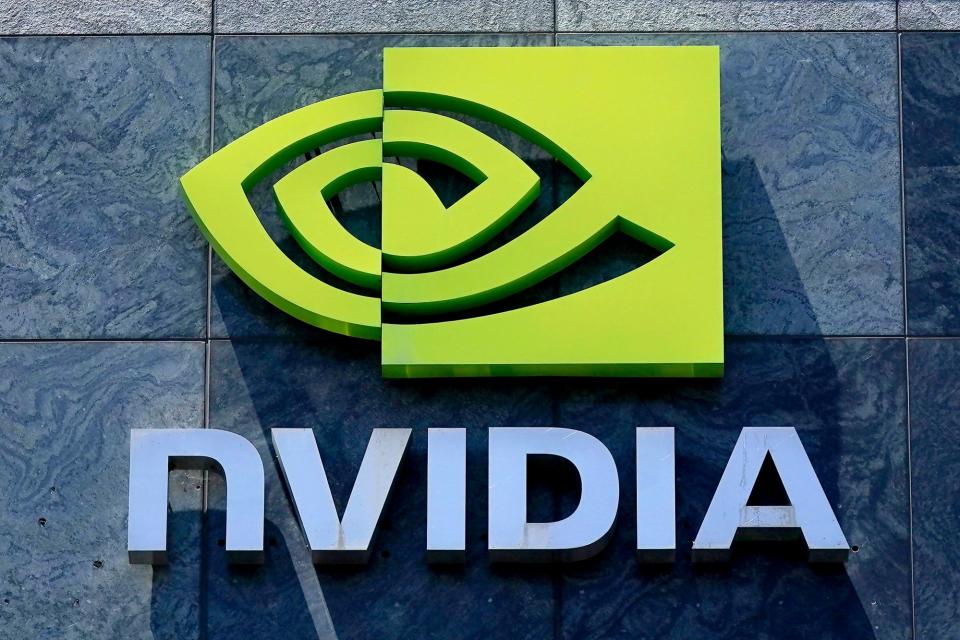
De nombreux ETF suivent les actions des fabricants de puces électroniques comme Nvidia. Photo : AP Photo alt=De nombreux ETF suivent les actions des fabricants de puces électroniques comme Nvidia. Photo : AP Photo>
« Le niveau phénoménal de croissance que nous avons observé jusqu’à présent dans le monde pour les ETF a été alimenté par les ETF passifs », a déclaré Cho. « Mais à mesure que les ETF continuent de se développer et que de plus en plus d’investisseurs, tant institutionnels que particuliers, les adoptent dans leurs portefeuilles, les cas d’utilisation et la demande vont se diversifier et s’étendre. »
La popularité croissante des ETF les a vus supplanter discrètement les fonds communs de placement. L’année dernière, près de 800 milliards de dollars ont quitté les fonds communs de placement à l’échelle mondiale, tandis que les ETF ont attiré 800 milliards de dollars d’investissements.
JPMorgan Asset Management, traditionnellement une société de gestion active, a intensifié ses efforts pour se réinventer en convertissant des fonds communs de placement en ETF actifs. La société, qui a connu du succès aux États-Unis et en Europe, vise une croissance similaire en Asie.
L’idée derrière les ETF actifs est simple : ils combinent les avantages du suivi passif des indices pour offrir aux investisseurs une exposition au marché au sens large, tout en exploitant les compétences de sélection d’actions des gestionnaires de portefeuille pour identifier les titres mal valorisés et en tirer parti.
Cette gestion active vise à générer une surperformance par rapport à un fonds indiciel pur. La structure de l’ETF lui permet de bénéficier d’une publication quotidienne et d’une liquidité intraday, ce qui permet également une distribution directe aux investisseurs et élimine le besoin d’intermédiaires.
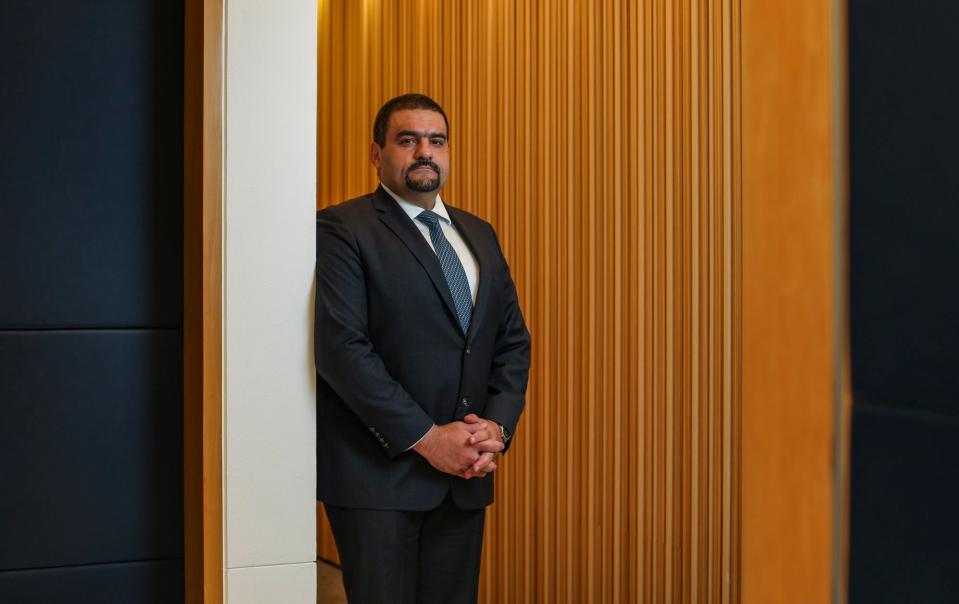

Philippe El-Asmar, directeur général et responsable des ETF, directs et digitaux pour l’Asie-Pacifique chez JPMorgan Asset Management. Photo : Xiaomei Chen alt=Philippe El-Asmar, directeur général et responsable des ETF, directs et digitaux pour l’Asie-Pacifique chez JPMorgan Asset Management. Photo : Xiaomei Chen>
« C’est comme si l’on poussait le développement d’un fonds commun de placement plus loin ; c’est un véhicule supérieur », a déclaré Philippe El-Asmar, directeur général et responsable des ETF, directs et numériques pour l’Asie-Pacifique chez JPMorgan Asset Management, basé à Hong Kong. « Il offre plus de transparence, plus de liquidité et une meilleure rentabilité qu’un fonds commun de placement. »
Au cours des dernières années, presque tous les gestionnaires de portefeuille, à quelques exceptions près, se sont sentis plus à l’aise avec l’utilisation des ETF pour mettre en œuvre leur stratégie, a-t-il ajouté.
Cette évolution souligne les pressions auxquelles sont confrontés les fonds communs de placement traditionnels à gestion active. Prenons l’exemple des États-Unis : moins d’un tiers des fonds communs de placement ont surperformé la moyenne de leurs concurrents ETF passifs sur la période de 10 ans jusqu’en décembre 2023, selon une étude de Morningstar.
Cette sous-performance porte atteinte au principal argument de vente des fonds communs de placement actifs : leur promesse de rendements plus élevés justifiant des frais plus élevés. Le ratio de frais moyen, le pourcentage des actifs payés pour gérer le fonds, était de 0,48 % pour les ETF passifs et de 1,02 % pour les fonds communs de placement à gestion active en 2023, selon Morningstar.
« L’un des facteurs qui stimulent la croissance des ETF est le déclin structurel de la génération d’alpha par les fonds communs de placement actifs », a déclaré Hao Zhang, responsable du développement commercial pour la Chine chez Mirae Asset. « Les marchés devenant plus efficaces, il est très difficile de battre régulièrement les indices de référence. »
Certes, comme tout autre produit d’investissement, les ETF comportent des risques.
L’idée reçue selon laquelle les produits passifs sont intrinsèquement plus sûrs est répandue. Selon El-Asmar, un produit passif axé sur un secteur très restreint peut être volatil et risqué par rapport à un produit indiciel à large assise. Les ETF à gestion active peuvent comporter leurs propres risques s’ils s’écartent considérablement de l’indice de référence sous-jacent.
« Il est donc très important que les investisseurs soient conscients et comprennent la différence entre les différents types de produits », a-t-il déclaré.
Luk, quant à lui, est plutôt satisfait de son réorientation de portefeuille vers les ETF, grâce à la tendance haussière des marchés dans lesquels il a investi. Il a déclaré qu’il chercherait à ajouter davantage d’ETF à son portefeuille au fur et à mesure qu’il développerait ses investissements au fil du temps.
« Je suis heureux de pouvoir accompagner » le marché dans son ensemble sans avoir à y consacrer trop de temps, a-t-il déclaré.
Ding, du CSOP, a résumé la situation en affirmant que les investisseurs n’ont pas toujours besoin de professionnels pour les aider à gérer leur argent. « Lorsque vous avez une idée d’investissement, les ETF peuvent souvent vous offrir l’outil. »
Cet article a été publié à l’origine dans le Le journal South China Morning Post (SCMP)la voix la plus autorisée à rendre compte de la Chine et de l’Asie depuis plus d’un siècle. Pour plus d’histoires du SCMP, veuillez consulter le Application SCMP ou visitez le SCMP Facebook et Twitter pages. Copyright © 2024 South China Morning Post Publishers Ltd. Tous droits réservés.
Copyright (c) 2024. South China Morning Post Publishers Ltd. Tous droits réservés.
ETFs
Missed the Bull Market Resumption? 3 ETFs to Help You Build Wealth for Decades
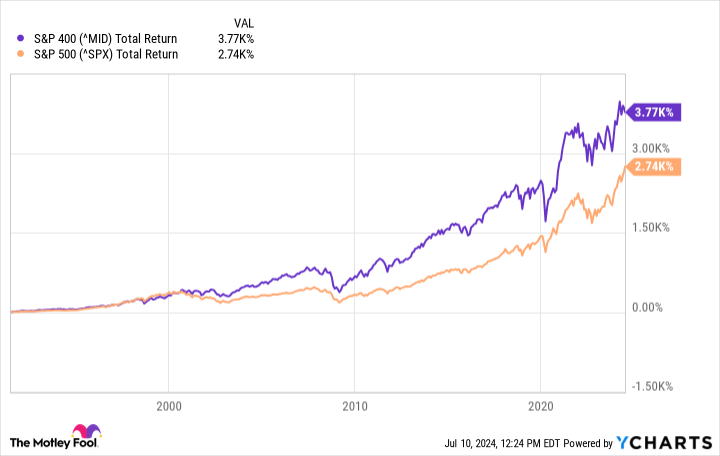
The market’s rebound from the 2022 bear market was not only unexpected. It was also bigger than expected. S&P 500 The stock price is up 60% from the bear market low, despite no clear signs at the time that such a rally was in the works. Chances are you missed at least part of this current rally.
If so, don’t be discouraged: you’re in good company. You’re also far from financially ruined. While you can’t go back and make up for the missed opportunity, for long-term investors, the growth potential is much greater.
If you want to make sure you don’t miss the next big bull run, you might want to tweak your strategy a bit. This time around, you might try buying fewer stocks and focusing more on exchange traded funds (or ETFs), which are often easier to hold when things get tough for the overall market.
With that in mind, here’s a closer look at three very different ETFs to consider buying that could – collectively – complement your portfolio brilliantly.
Let’s start with the basics: dividend growth
Most investors naturally favor growth, choosing growth stocks to achieve that goal. And the strategy usually works. However, most long-term investors may not realize that they can get the same type of net return with boring dividend stocks like the ones held in the portfolio. Vanguard Dividend Appreciation ETF (NYSEMKT: VIG) which reflects the S&P US Dividend Growth Index.
As the name suggests, this Vanguard fund and its underlying index hold stocks that not only pay consistent dividends, but also have a history of consistently increasing dividends. To be included in the S&P US Dividend Growers Index, a company must have increased its dividend every year for at least the past 10 years. In most cases, however, they have been doing so for much longer.
The ETF’s current dividend yield of just under 1.8% isn’t exactly exciting. In fact, it’s so low that investors might wonder how this fund is keeping up with the broader market, let alone growth stocks. What’s being grossly underestimated here is the sheer magnitude of these stocks. dividend growthOver the past 10 years, its dividend per share has nearly doubled, and more than tripled from 15 years ago.
The reason is that solid dividend stocks generally outperform their non-dividend-paying counterparts. Calculations by mutual fund firm Hartford indicate that since 1973, S&P 500 stocks with a long history of dividend growth have averaged a single-digit annual return, compared with a much more modest 4.3% annual gain for non-dividend-paying stocks, and an average annual return of just 7.7% for an equal-weighted version of the S&P 500. The numbers confirm that there’s a lot to be said for reliable, consistent income.
The story continues
Then add capital appreciation through technology
That said, there’s no particular reason why your portfolio can’t also hold something a little more volatile than a dividend-focused holding. If you can stomach the volatility that’s sure to continue, take a stake in the Invesco QQQ Trust (NASDAQ: QQQ).
This Invesco ETF (often called the “cubes” or the triple-Q) is based on the Nasdaq-100 index. Typically, this index consists of 100 of the Nasdaq Composite IndexThe index is one of the largest non-financial indices at any given time. It is updated quarterly, although extreme imbalance situations may result in unplanned rebalancing of the index.
That’s not what makes this fund a must-have for many investors, though. It turns out that most high-growth tech companies choose to list their shares through the Nasdaq Sotck exchange rather than other exchanges like the New York Stock Exchange or the American Stock ExchangeNames like Apple, MicrosoftAnd Nvidia are not only Nasdaq-listed securities. They are also the top holdings of this ETF, with Amazon, Meta-platformsand Google’s parent company AlphabetThese are of course some of the highest-yielding stocks on the market in recent years.
This won’t always be the case. Just as companies like Nvidia and Apple have squeezed other names out of the index to make room for their stocks, these current names could also be replaced by other names (although it will likely be a while before that happens). It’s the proverbial life cycle of the market.
This shift, however, will likely be driven by technology companies that are offering revolutionary products and services. Owning a stake in the Invesco QQQ Trust is a simple, low-cost way to ensure you’re invested in at least most of their stocks at the perfect time.
Don’t forget indexing, but try a different approach
Finally, while Triple-Q and Vanguard Dividend Appreciation funds are smart ways to diversify your portfolio over the long term, the good old indexing strategy still works. In other words, rather than risk underperforming the market by trying to beat it, stick to tracking the long-term performance of a broad stock index.
Most investors will opt for something like the SPDR S&P 500 Exchange Traded Fund (NYSEMKT:SPY), which of course mirrors the large-cap S&P 500 index. And if you already own one, great: stick with it.
If and when you have some spare cash to put to good use, consider starting a mid-cap funds as the iShares Core S&P Mid-Cap ETF (NYSEMKT: IJH) instead. Why? Because you’ll likely get better results with this ETF than you will with large-cap index funds. Over the past 30 years, S&P 400 Mid-Cap Index significantly outperformed the S&P 500.
^MID Chart
The disparate degree of gains actually makes sense. While no one disputes the solid foundations on which most S&P 500 companies are built, they are in many ways victims of their own size: It’s hard to get bigger when you’re already big. This is in contrast to the mid-cap companies that make up the S&P 400 Mid Cap Index. These organizations have moved past their rocky, shaky early years and are just entering their era of high growth. Not all of them will survive this phase, but companies like Advanced microsystems And Super microcomputer Those that survive end up being incredibly rewarding to their patient shareholders.
Should You Invest $1,000 in iShares Trust – iShares Core S&P Mid-Cap ETF Right Now?
Before purchasing shares of iShares Trust – iShares Core S&P Mid-Cap ETF, consider the following:
The Motley Fool Stock Advisor analyst team has just identified what they believe to be the 10 best stocks Investors should buy now…and the iShares Trust – iShares Core S&P Mid-Cap ETF wasn’t one of them. The 10 stocks selected could generate monstrous returns in the years to come.
Consider when Nvidia I made this list on April 15, 2005… if you had $1,000 invested at the time of our recommendation, you would have $791,929!*
Stock Advisor provides investors with an easy-to-follow blueprint for success, including portfolio construction advice, regular analyst updates, and two new stock picks each month. The Stock Advisor service offers more than quadrupled the return of the S&P 500 since 2002*.
*Stock Advisor returns as of July 8, 2024
John Mackey, former CEO of Amazon’s Whole Foods Market, is a member of The Motley Fool’s board of directors. Randi Zuckerberg, former director of market development and spokesperson for Facebook and sister of Meta Platforms CEO Mark Zuckerberg, is a member of The Motley Fool’s board of directors. Suzanne Frey, an executive at Alphabet, is a member of The Motley Fool’s board of directors. James Brumley has positions in Alphabet. The Motley Fool has positions in and recommends Advanced Micro Devices, Alphabet, Amazon, Apple, Meta Platforms, Microsoft, Nvidia, and Vanguard Specialized Funds – Vanguard Dividend Appreciation ETF. The Motley Fool recommends Nasdaq and recommends the following options: long January 2026 $395 calls on Microsoft and short January 2026 $405 calls on Microsoft. The Motley Fool has a position in Advanced Micro Devices, Alphabet, Amazon, Apple, Meta Platforms, Microsoft, Nvidia, and Vanguard Specialized Funds – Vanguard Dividend Appreciation ETF. The Motley Fool recommends Nasdaq and recommends the following options: long January 2026 $395 calls on Microsoft and short January 2026 $405 calls on Microsoft. disclosure policy.
Missed the Bull Market Resumption? 3 ETFs to Help You Build Wealth for Decades was originally published by The Motley Fool
ETFs
This Simple ETF Could Turn $500 a Month Into $1 Million

This large-cap ETF offers investors the potential for above-market returns while minimizing risk.
It’s always inspiring to hear stories of people who invested in a company and made tons of money as the company grew and became successful. While these stories are a testament to the power of investing, they can also be misleading. That’s not because it doesn’t happen often, but because you don’t have to make a big splash on a single company to make a lot of money in the stock market.
Invest regularly in exchange traded funds (AND F) is a great way to build wealth. ETFs allow you to invest in dozens, hundreds, and sometimes thousands of companies in a single investment. For investors looking for an ETF that can help them become millionaires, look no further than the Vanguard Growth ETFs (VUG 0.61%).
A history of outperforming the market
Since its launch in January 2004, this ETF has outperformed the market (based on S&P 500 Back), with an average total return of around 11.6%. The returns are even more impressive when looking back over the past decade, with the ETF posting an average total return of around 15.7%.
Total VUG Performance Level data by YCharts
The ETF’s past success doesn’t mean it will continue on this path, but for the sake of illustration, let’s take a middle ground and assume it averages about 13% annual returns over the long term. Averaging those returns, monthly investments of $500 could top the $1 million mark in just over 25 years.
Assuming (emphasis on the word “assume”) that the ETF continues to generate an average total return of 15.7% over the past decade, investing $500 a month could get you past $1 million in about 23 years. At an annual return of 11.6%, that would take nearly 28 years.
There is no way to predict the future performance of the ETF, but the most important thing is the power of time and Compound profit. Earning $1 million by saving alone is a difficult and unachievable task for most people. However, it becomes much more achievable if you give yourself time and make regular investments, no matter how small.
So why choose the Vanguard Growth ETF?
This ETF can offer investors the best of both worlds. On the one hand, since it only contains large cap stocksIt offers more stability and less volatility than you typically find with smaller growth stocks. At the other end, the focus on growth means it is built with the goal of outperforming the market.
Investing involves a tradeoff between risk and return, and this ETF falls somewhere in the middle for the most part. That’s not just because it only contains large-cap stocks. It’s also because large-cap stocks are leading the way. Here are the ETF’s top 10 holdings:
- Microsoft: 12.60%
- Apple: 11.51%
- Nvidia: 10.61%
- Alphabet (both share classes): 7.54%
- Amazon: 6.72%
- Meta-platforms: 4.21%
- Eli Lilly: 2.88%
- You’re here: 1.98%
- Visa: 1.72%
The Vanguard Growth ETF is not as diversified as other broad ETFs, with the top 10 holdings making up nearly 60% of the fund and the “The Magnificent Seven” with stocks accounting for about 55%. However, many of these companies (particularly mega-cap technology stocks) have been among the best performers in the stock market over the past decade and still have great growth opportunities ahead of them.
MSFT Total Return Level data by YCharts
Big tech stocks are expected to continue to see growth in areas such as cloud computing, artificial intelligenceand cybersecurity; Eli Lilly will benefit from advances in biotechnologyTesla is one of the leaders in electric vehicles, which are still in the early stages of development; and Visa is expected to be one of the forerunners as the world moves toward more digital payments.
ETF concentration adds risk, especially if Microsoft, Apple or Nvidia is experiencing a slowdownBut these companies are well positioned to drive long-term growth despite any short-term setbacks that may arise. Consistent investments over time in the Vanguard Growth ETF should pay off for investors.
Randi Zuckerberg, former head of market development and spokesperson for Facebook and sister of Meta Platforms CEO Mark Zuckerberg, is a member of The Motley Fool’s board of directors. Suzanne Frey, an executive at Alphabet, is a member of The Motley Fool’s board of directors. John Mackey, former CEO of Whole Foods Market, an Amazon subsidiary, is a member of The Motley Fool’s board of directors. Stefon Walters has positions in Apple and Microsoft. The Motley Fool has positions in and recommends Alphabet, Amazon, Apple, Meta Platforms, Microsoft, Nvidia, Tesla, Vanguard Index Funds-Vanguard Growth ETF, and Visa. The Motley Fool recommends the following options: long January 2026 $395 calls on Microsoft and short January 2026 $405 calls on Microsoft. The Motley Fool has a position in shares of Apple and Microsoft. disclosure policy.
ETFs
Ethereum ETFs Could Bring in $1 Billion a Month
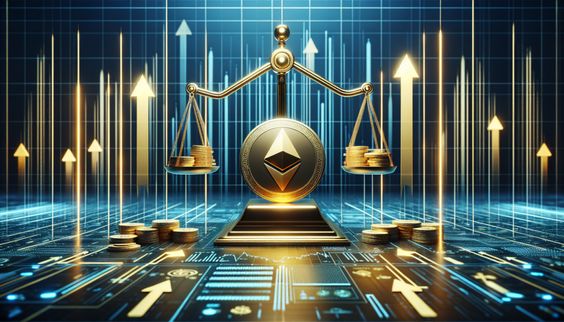
In a recent interview with Bloomberg, Kraken’s chief strategy officer Thomas Perfumo predicted that Ethereum ETFs could attract between $750 million and $1 billion in monthly investments.
“Market sentiment is being priced in. I think the market has priced in something like $750 million to $1 billion of net inflows into Ethereum ETF products each month,” Perfumo said.
In the interviewPerfumo noted that if inflows exceed expectations, it could provide strong support to the industry and potentially drive Ethereum to new record highs.
This creates positive support for the industry, if we go beyond that, note that Bitcoin was at a rate above $2.5 billion
He said
Moreover, the hype around Ethereum ETFs has already sparked some optimism among investors. After the SEC approved the 19b-4 filing, Ethereum’s price jumped 22%, attracting investment into crypto assets.
This price movement shows how sensitive the market is to regulatory changes and the growth potential once ETFs are approved.
Perfumo also highlighted other factors supporting current market sentiment, including the upcoming US elections and a potential interest rate cut by the Federal Reserve. Recent US CPI data suggests disinflation on a monthly and annual basis, with some traditional firms predicting rate cuts as early as September.
These broader economic factors, combined with developments in the crypto space, are shaping the overall market outlook.
Regarding Kraken’s strategy, Perfumo highlighted the exchange’s goal of driving cryptocurrency adoption through strategic initiatives. When asked about rumors of Kraken going public, he reiterated that the company’s intention is instead to broaden cryptocurrency adoption.
Read also : Invesco, Galaxy Cut Ether ETF Fees to 0.25% in Competitive Market
ETFs
Kraken Executive Expects Ethereum ETF Launch to “Lift All Boats”

Kraken Chief Strategy Officer Thomas Perfumemo said: Ethereum ETFs (ETH) could help the crypto sector while commenting on political developments in the United States.
On July 12, Perfumo told Bloomberg that spot Ethereum ETFs would attract capital flows while drawing attention to crypto, noting:
“It’s a rising tide, which lifts the whole history of the boat.”
Perfumo further explained that the final value of Ethereum “depends on the Ethereum ETF.”
He said the cryptocurrency market is “pricing in” between $750 million and $1 billion in net inflows into Ethereum products on a monthly basis, which would imply that Ethereum could reach all-time highs between $4,000 and $5,000.
Perfumo also compared expectations to Bitcoin’s all-time high in March, which he called a “silent spike” that occurred without any evidence of millions of new investors entering the industry.
Political evolution
Perfumo also commented on political developments. At the beginning of the interview, he said that the results of the US elections “will set the tone for policymaking and the legislative agenda for the next four years.”
He also stressed the importance of legislative action and clarity and noted that recent developments show bipartisan support in Congress.
The House recently voted to pass the Financial Innovation and Technology for the 21st Century Act (FIT21) and attempted to repeal controversial SEC accounting rules with the Senate. However, the president Joe Biden Chosen to veto The resolution.
Perfume said:
“Even if you encounter obstacles at the executive level, [there’s] “There is still good progress to come.”
He added that the Republican Party appears “more pro-crypto.” [and] “more progressive” on the issue, noting Donald Trump plans to attend the Bitcoin Conference in Nashville.
Trump has also made numerous statements in support of pro-crypto policy, including at recent campaign events in Wisconsin And San Francisco.
Mentioned in this article
-

 DeFi11 months ago
DeFi11 months agoSwitchboard Revolutionizes DeFi with New Oracle Aggregator
-

 News12 months ago
News12 months agoLatest Business News Live Updates Today, July 11, 2024
-

 DeFi11 months ago
DeFi11 months agoIs Zypto Wallet a Reliable Choice for DeFi Users?
-

 DeFi1 year ago
DeFi1 year ago👀 Lido prepares its response to the recovery boom
-
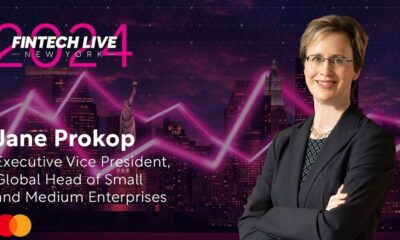
 Fintech11 months ago
Fintech11 months agoFinTech LIVE New York: Mastercard and the Power of Partnership
-

 DeFi11 months ago
DeFi11 months agoEthena downplays danger of letting traders use USDe to back risky bets – DL News
-

 Fintech1 year ago
Fintech1 year ago121 Top Fintech Companies & Startups To Know In 2024
-

 Fintech1 year ago
Fintech1 year agoFintech unicorn Zeta launches credit as a UPI-linked service for banks
-

 News1 year ago
News1 year agoSalesforce Q1 2025 Earnings Report (CRM)
-
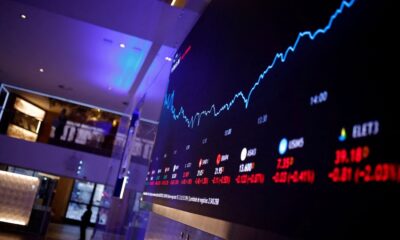
 ETFs1 year ago
ETFs1 year agoGold ETFs see first outing after March 2023 at ₹396 cr on profit booking
-

 DeFi1 year ago
DeFi1 year agoTON Network Surpasses $200M TVL, Boosted by Open League and DeFi Growth ⋆ ZyCrypto
-
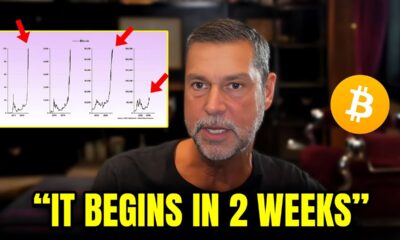
 Videos1 year ago
Videos1 year ago“We will enter the ‘banana zone’ in 2 WEEKS! Cryptocurrency prices will quadruple!” – Raoul Pal

